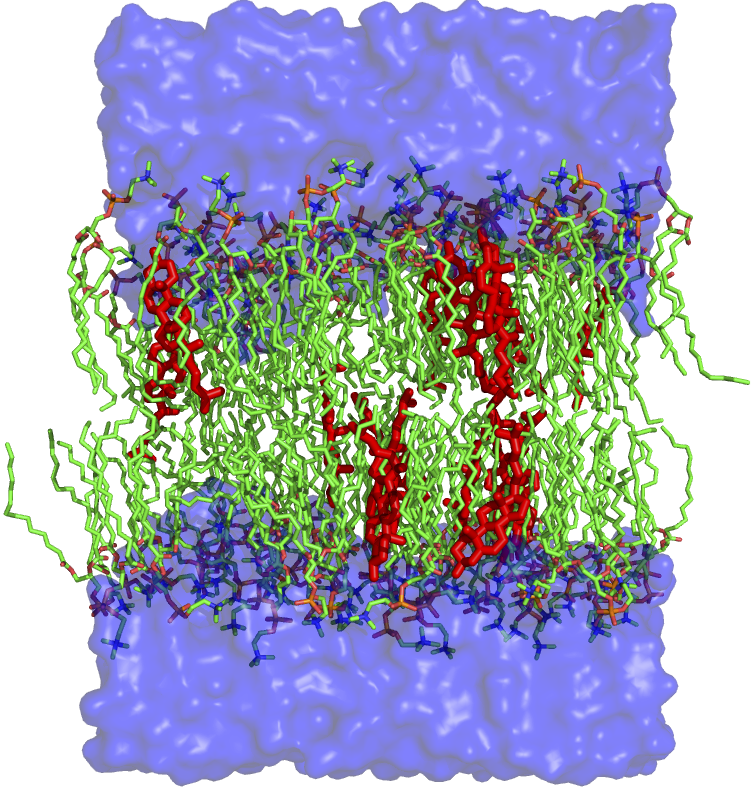

The stratum corneum is the outermost layer of the skin, thus the majority of substances which humans are exposed to will undergo some interaction with the stratum corneum. A major role of the stratum corneum is its barrier function, preventing exogenous compounds from penetrating the skin, and entering the body.The stratum corneum is composed of keratinosized cells surrounded by a lipid matrix. It has been shown that this lipid matrix is the rate limiting permeation step for the majority of skin permeants. Thus a detailed understanding of the interaction of permeants with the lipid matrix is usefull in: predicting skin permeation, characterizing hazardous chemical agents, as well as the removal harmful permeants from the skin.The lipid matrix is a complex mixture of three major lipid groups: ceramides, free fatty acids, and cholesterol. Structurally, these components are arranged in a highly ordered and compact state forming a multilamellar arrangement. The compactness of the lipid matrix hampers the usefulness of standard computational methods when trying to study permeation.My project focuses on developing and validating a novel coarse grain computational model of the stratum corneum lipid matrix for implementation within the coarse-grained ELBA forcefield. The ELBA forcefield is unique in that it incorporates realistic electrostatic interactions within a coarse-grained model, which allows hybrid atomistic/coarse-grained simulations to be performed. The lipid matrix model will be used for studying the interaction with, and predicting the permeation of compounds of interest.As the model will be parameterised primarily on atomistic molecular dynamics data, it is vital the most accurate simulation data is used. To this means, the first step of my project is focused on comparative forcefield studies on the three major lipids of the lipid matrix: cholesterol, ceramides, and free fatty acids.